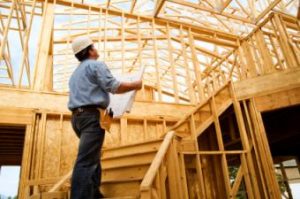
Although Q2 2019’s GDP growth of 2.1% exceeded expectations, housing’s share of the GDP declined to 14.6%, according to the National Association of Home Builders (NAHB).
Recording its sixth-consecutive negative contribution to GDP growth was home building and remodeling, which fell to just 3.1% of the GDP.
The NAHB stated the lack of housing supply caused by “ongoing housing affordability issues” continues to threaten the market.
According to the NAHB, housing-related activities contributes to the GDP in two ways. First is through residential fixed investment (RFI), which is the measure of home building, remodeling contributions, and multifamily development contributions to the GDP. It also includes construction of new single-family and multifamily structures, residential remodeling, production of manufactured homes and brokers’ fees.
The RFI for Q2 2019 was 3.1% of the economy, totaling $589 billion. The second impact is the measure of housing services, which entails rents paid by renters and owners, and utility payments. Housing services for the quarter was 11.5%, or $2.18 trillion of the economy.
The NAHB states that the RFI historically averages around 5% of the GDP, while housing services hovers around 12%.
The Fed’s possible decision on interest rates on July 31 could give the housing market a boost, as many feel it lower mortgage rates and spur activity. A WalletHub report stated there is a 78% chance the Fed drops interest rates, and that mortgage rates could fall if they do
“Mortgages have fixed rates that are priced with a far longer timeframe in mind than other borrowing vehicles,” the report stated. “However, that is not to say Fed rate changes don’t make mortgages more or less expensive for new borrowers.”
WalletHub’s estimates a rate cut could drop the cost of mortgage by around 10 basis points.
The Fed has cost the average homebuyer more than $38,000 since 2015, assuming an 80-basis point rise on a 30-year fixed rate mortgage from January 2015 to January 2019. WalletHub states that increase is due solely to the nine Fed rate increase occurring during that time.
A rate could be what the market needs, as CNBC reported last week that the overall volume of mortgage applications for the week fell 1.9%.

 theMReport.com Your trusted source for mortgage banking news
theMReport.com Your trusted source for mortgage banking news








